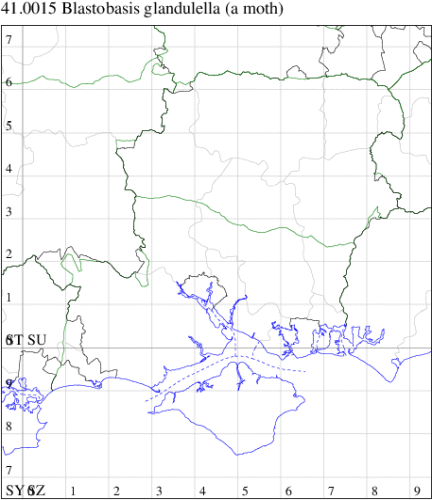Blastobasis glandulella
Checklist Number41.0015 [B&F: N/A]
Verification
Record requires retention of specimen until confirmed, and may require dissection. Consult with CMR if unsure
Classification
| Family: | Blastobasidae |
| Subfamily: | Blastobasinae |
| Genus: | Blastobasis |
| Species: | glandulella |
| Authority: | (Riley, 1871) |
A North American species which was accidentally introduced to mainland Europe and has now spread across much of the continent. First recorded in Britain in Ringmer, East Sussex on 26 June 2023 (Ent Rec J Var 135: 193-196). Specimens can be similar to other Blastobasis (particularly B. phycidella and vittata) and dissection is required for positive identification: Peter Hodge in the forementioned article suggests that candidates for examination may possibly be identified by the presence of yellow anal tufts. Forewing: 7 to 12mm. The larva feeds within the fruit of oaks and chestnuts.

